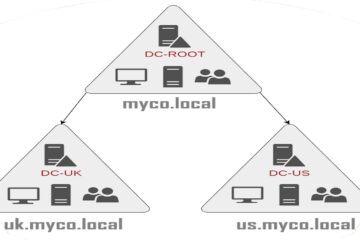From HP & Gartner Group
We’re always trying to see into the future, imagining what our world will look like, ten, twenty, a hundred years from now.
In August 2010, industry analysts Gartner, Inc. released their predictions for changing trends in the way we will work over the next ten years to 2020 – and, though they may sound futuristic, don’t forget: ten years ago, you had an analogue mobile phone which could only be used for … phoning. Didn’t you?
So, what changes does Gartner foresee?
Increasingly chaotic environments
The overall message seems to be that the work environment will be more chaotic and that businesses will have to be able to adapt to this changing style in order to survive.
In other words, the patterns of our work will become less routine and predictable. Most processes will be automated, and humans will only be involved in “non-routine processes”: human, analytical or interactive contributions including “discovery, innovation, teaming, leading, selling and learning”. The example given by Gartner is that only a human is capable of persuading a sceptical buyer; while automated tools can augment this process, it’s the human interaction that ultimately convinces the buyer to buy the goods.
Gartner envisages a future where teams, now known as “swarms”, will quickly be assembled out of individuals who may never have met each other or worked together before, in response to ad hoc requirements. Instead of the structured situations we are used to, with a manager and a team who regularly work together on projects, a “swarm” of workers will be put together as the need arises and will disperse just as quickly, once the project is completed. It will be crucial for businesses to be able to put together a swarm to “attack” a project, and crucial to be able to navigate your personal, professional and social networks (which will really all be the same thing) to survive.
Outside the business organisations will be many informal groups of people linked by common interests, who can directly affect the organisation’s success or failure. These will be known as “collectives”. Business executives will have to know to identify the key people in these collectives, use them to gather market intelligence and exploit them for business benefit.
Non-routine work processes will be highly informal and will lack any meaningful standard patterns; again, most of these processes will be created and completed “on the fly”, quite spontaneously and without using any obvious model or pattern. Indeed, the word “spontaneous” is absolutely key to the Gartner report, describing not only the way in which work teams (swarms) are created, but also how businesses will continuously have to seek new opportunities and create new patterns and models.
Another interesting new trend according to Gartner will be more active engagement in the workplace with simulated, or virtual, environments. Technologies will determine what materials go together in these environments based on analysing how people work with the content. By actively manipulating the various parameters, people will interact with the data and reshape the virtual world they are looking at.
In this chaotic, unstructured and insecure work world of the future, according to Gartner, businesses will have to be “hyper-connected”; this means that overall control and responsibility will be hard to identify, if they exist at all. This has enormous implications for how people work, how employers contract their employees, and for the IT that supports and augments our work.
The future workplace will, by definition, be more or less virtual. If you are just part of a swarm, you won’t have an office, a manager or work colleagues. Nevertheless, according to Gartner, you will still have a “place” where you work – presumably, your home – and you will be at it 24/7. This will create a life of overlapping demands, with no clear differentiation between “work and home life”, something which still exists at the end of 2010. Personal, professional, social and family matters will blur into one. How will individuals cope with this?
According to Gartner: “Those that cannot manage the underlying ‘expectation and interrupt overloads’ will suffer performance deficits as these overloads force individuals to operate in an over-stimulated (information-overload) state.”
But don’t panic yet – in 1975, Business Week predicted that the “paperless office” was “just around the corner” …



0 Comments